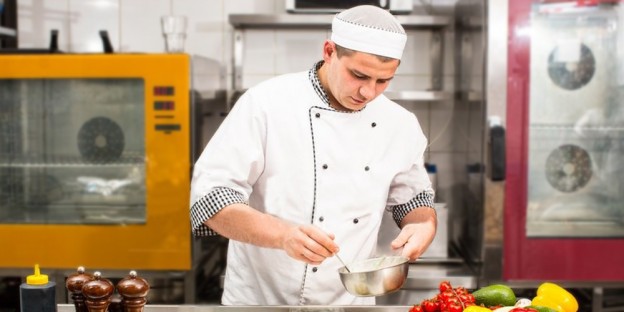Selling exotic locales on cruise packages happens with beautifully crafted images, but getting guests to come back over and over again, is a result not just of gorgeous places, but also delicious food. Cruise ship chef jobs are meant not only to satisfy appetites, but create interesting gastronomic experiences for foodies.
Knowing the variety of exotic ingredients available and how to use them will give you that edge over others, and offer that twist to every day dishes that will leave cruise ship guests mind-blown. One secret ingredient making waves around the world today is black garlic. It’s a type of caramelised garlic used in Asian cuisine, but its sweetish, almost-charred and complex flavour has allowed it to work with everything from ranch-style dressing to confits and even sandwich spreads, steak rubs, pâtés and even savoury ice cream.
In lieu of Tabasco, chefs are now moving to gochujang, that piquant Korean addition that has been discovered to go so well with spaghetti Bolognese, curries and fajitas. Cruise ship kitchens could be smart to stock this versatile ingredient that holds its own in popular Korean food but can slide over to the fusion section as required – used with corn on the cob, burgers, pulled pork or even a bloody Mary.
Based on which part of the world the cruise liner is in, adding locally sourced exotic meats to the shopping list can help raise the bar of the cruise ship kitchen. Kangaroo meat – relatively inexpensive in Australia – offers a delicious gamey flavour in comparison to regular steaks, and can be used in burgers, sausages and even pizza. Like kangaroo, another Aussie meat – emu – is also nutritionally valued being low in fat and can serve as a delicious option to health conscious travellers.
Stocking up on achiote in the Caribbean, grains of paradise in Africa, amchur powder in India, machalepi in Greece, fennel pollen in Italy or dried kaffir lime leaves in Thailand means you’ll get the real deal when you source it locally and also add authentic flavour to your dishes.
It’s important to read about various ingredients and have a taste when you get the chance – such as visiting a local market or food street when in port. Locals will only ever use good quality ingredients and checking out how these are used in cooking will help you develop a vision of incorporating them on board.
By tasting local ingredients on their own and also in various dishes, you will get an idea of the quantity to be used as well, since over use is an easy way to turn what could have been an amazing, exotic dish into something quite unappetising.
The key to doing well in any industry, including hospitality, is to keep upgrading your skills and innovating. Even small things like substituting an exotic spice for a regularly used one can subtly change the nature of the dish, something that will find favour with well-travelled food lovers.


